Like a painter facing a blank canvas, you’re at the beginning of exploring the vast landscape of arts and crafts hobbies, each with its own set of trends and data pointing towards increasing popularity among diverse age groups.
Analysis reveals that activities like knitting have seen a resurgence, with a significant uptick in online tutorials and social media engagement, while traditional painting maintains steady interest due to its therapeutic benefits. However, the evolving landscape suggests a growing interest in digital art forms, underlined by burgeoning online communities and accessible learning resources.
This shift poses the question: what traditional and digital arts and crafts hobbies will dominate the scene, and why? Let’s embark on this journey to uncover where your creative potential could be best invested.
The adventure begins here, where every creation is a step towards a happier, more inspired you.
Painting Techniques

Exploring the world of painting reveals a fascinating array of techniques that serve as a canvas for artists to express their creativity and individuality. From traditional approaches to innovative methods, painting encompasses a broad spectrum of styles, each offering a unique experience and result.
Below is a list of 9 to 13 tailored hobbies within the realm of painting, showcasing the diversity and richness of this art form.
- Acrylic Pouring: A modern technique that has become a popular hobby for its ability to produce stunning abstract patterns and colors. By pouring acrylic paint onto a canvas, artists can create captivating, fluid artworks that are truly one-of-a-kind.
- Watercolor Wet-on-Wet: A classic hobby that remains a favorite for its gentle and translucent effects. This technique allows watercolor paints to blend and merge on wet paper, creating soft gradients and subtle color transitions ideal for landscapes and portraits.
- Palette Knife Painting: Known for its textured and expressive outcomes, palette knife painting is a great hobby for those looking to explore bold strokes and dimensional artworks. It’s particularly effective for abstract and landscape pieces.
- Oil Painting: A traditional and revered technique, oil painting offers depth and richness unmatched by other mediums. Its slow drying time allows for intricate blending, making it a perfect hobby for detailed and realistic artworks.
- Gouache Painting: For those seeking a hobby with vibrant and opaque results, gouache painting is an excellent choice. This water-based medium is similar to watercolor but with a greater opacity, ideal for bold illustrations and designs.
- Charcoal Drawing: While not strictly painting, charcoal drawing is an interesting hobby that explores the grayscale spectrum, offering a dramatic and expressive approach to art through its rich blacks and soft shading techniques.
- Digital Painting: A new and exciting hobby, digital painting utilizes technology to create artworks. With the aid of graphic tablets and software, artists can simulate traditional painting techniques or explore completely new styles.
- Encaustic Painting: An ancient technique experiencing a resurgence, encaustic painting involves using heated beeswax mixed with colored pigments. This hobby offers a unique texture and depth, appealing to those interested in experimenting with materials and effects.
- Spray Paint Art: A cool hobby that has grown beyond its street art origins, spray paint art allows for rapid application and vibrant colors, perfect for creating cosmic scenes, landscapes, and abstract pieces on various surfaces.
- Ink Wash Painting: Inspired by traditional East Asian techniques, ink wash painting (or Sumi-e) focuses on the beauty of each brushstroke and the play of light and dark. It’s a meditative and discipline-focused hobby that produces elegant and minimalist works.
- Sgraffito: This technique involves scratching through a surface to reveal a lower layer of contrasting color, offering a unique way for artists to create intricate designs and textures. It’s a fun hobby for those interested in a more tactile and interactive form of painting.
- Marbling: A fascinating hobby involving floating pigments on water and transferring them onto paper or fabric, creating swirling, abstract patterns. Marbling is a great activity for those looking for a less conventional approach to art.
- Fresco Painting: A challenging hobby that involves applying pigment onto wet plaster, fresco painting is a technique with historical significance, offering a deep connection to the past and a unique texture and appearance.
In delving into these painting techniques and hobbies, we uncover a dynamic and evolving landscape of art that encourages experimentation and personal expression. Each hobby represents not just a set of skills, but a doorway to new experiences and artistic discoveries, making painting an endlessly fascinating and rewarding activity.
Paper Crafting

Paper crafting is a fascinating and dynamic form of artistic expression that has gained popularity as a fun hobby among people of various ages and skill levels. This field of creativity is known for its endless possibilities, allowing individuals to explore a wide range of techniques that transform ordinary paper into remarkable pieces of art. From the simplicity of folding and cutting to the complexity of detailed sculptures, paper crafting offers an enriching experience that combines creativity with precision.
The beauty of paper crafting lies in its diversity and the ability to cater to both novices and experts. Essential tools like scissors, cutting mats, and specialty punches enable crafters to delve into projects that range from the delicate to the robust. The creation of paper flowers, personalized greeting cards, and elaborate scrapbook pages are just the beginning of what can be achieved.
Here’s a more comprehensive list that showcases the variety within the paper crafting world, highlighting some of the most interesting techniques and projects that enthusiasts can delve into:
- Quilling: Utilizing thin strips of paper and glue, crafters create decorative frames and art pieces with intricate swirls and patterns.
- Paper Cutting: With cardstock and precise cutting tools, artists produce captivating wall art and decorations that showcase skillful design.
- Origami: The ancient art of paper folding, originating from Japan, allows for the creation of detailed sculptures and animals using specially designed origami paper.
- Paper Sculpture: By employing heavy paper and adhesives, crafters construct three-dimensional models and figurines that are both complex and captivating.
- Scrapbooking: A method for preserving memories, this technique uses scrapbook paper, stamps, and embellishments to create personalized albums and memory books.
- Papier-Mâché: A craft involving layers of paper and adhesive to form sculptures and decorative items, offering a tactile and engaging crafting experience.
- Paper Mosaics: Crafters assemble small pieces of colored paper to create vibrant mosaics that mimic the intricacies of traditional tile mosaics.
- Card Making: Personalized greeting cards are designed using various papers, stamps, and embellishments, allowing for a personalized touch in gift-giving.
- Bookbinding: A more advanced craft that involves creating handmade journals, notebooks, and albums, combining paper crafting with sewing and gluing techniques.
- Kirigami: Similar to origami, but incorporates cutting into the folding process, resulting in intricate designs and patterns.
- Marbling: A technique for creating patterned paper that can be used in various paper crafting projects, adding a unique and artistic flair.
- Decoupage: The art of decorating objects with paper cutouts, creating layered effects on furniture, boxes, and small decorative items.
These paper crafting methods each offer a unique avenue for exploration and creativity, making paper crafting an engaging and enjoyable hobby for many. As trends continue to evolve and new techniques emerge, the world of paper crafting remains a vibrant and rewarding activity, full of opportunities for personal growth and artistic expression.
Textile Arts
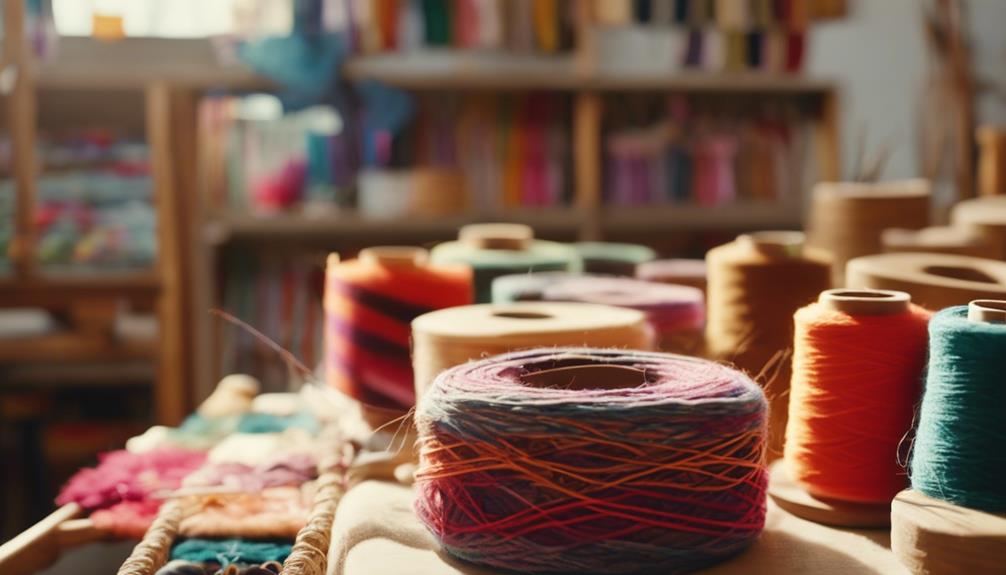
Transitioning from paper to fabric, the world of textile arts opens up a realm of creativity that allows enthusiasts to delve into a wide array of needlework techniques. From sewing and crochet to more specific skills like tatting and macramé, textile arts enable crafters to not only create but also personalize their projects to match their unique interests. Whether you’re a beginner or an experienced artisan, there’s always something new and exciting to explore in this field.
- Cross-Stitch: A great starting point for beginners, cross-stitch is a form of counted-thread embroidery that can yield highly detailed artwork with minimal complexity.
- Amigurumi: The Japanese art of knitting or crocheting small, stuffed yarn creatures offers a fun hobby for those looking to make adorable dolls.
- Tatting: This technique involves crafting lace by looping and knotting with a single cotton thread and a small shuttle, ideal for making delicate edgings and doilies.
- Macramé: Using various knotting techniques, macramé is perfect for creating everything from wall hangings to jewelry with cotton cord or hemp.
- Quilting: Combining pieces of fabric into larger designs, quilting can be both a cozy and creative pastime.
- Embroidery: With a rich history, embroidery involves decorating fabric with needle and thread, offering endless possibilities for personalization.
- Weaving: This craft involves interlacing two sets of yarns or threads at right angles to form cloth. Hand weaving without a loom can be a challenging hobby but highly rewarding.
- Knitting: From scarves to sweaters, knitting is a versatile skill that allows you to create wearable items and accessories.
- Felting: Using compressed fibers, felting is a unique textile art that can be used to make everything from decorative items to practical wearables.
- Dyeing: Hand dyeing fabric or yarn can transform your textile projects with vibrant colors and patterns.
- Lace-Making: Beyond tatting, there are other forms of lace-making like bobbin lace, offering a more intricate challenge for those looking to advance their skills.
- Spinning: Creating your own yarn through spinning can be a deeply satisfying activity, allowing full customization of your textile projects.
With the current resurgence in handmade textile crafts, driven by a desire for personalized and sustainable creations, these activities have become popular interests among craft enthusiasts. This movement not only aligns with the broader interest in DIY culture but also highlights the therapeutic benefits of engaging in craft activities. As you explore the diverse world of textile arts, you’ll find a fulfilling way to express yourself through the manipulation of fabrics and yarns, crafting pieces that mirror your unique style and interests. Selecting the right materials, such as AIDA brand threads for tatting and high-quality cotton cord for macramé, is crucial for achieving the desired outcome in your projects. Whether you’re looking for a cool hobby or an engaging way to spend your free time, the textile arts offer a broad list of options to explore.
Ceramic Arts

Diving into the world of ceramic arts opens up a realm of creativity and tradition, offering enthusiasts a blend of age-old skills and contemporary innovations. As one of the most fascinating craft hobbies, ceramic arts involve the transformation of clay into both functional items and pieces of beauty, appealing to a broad spectrum of artists and crafters. This craft has stood the test of time, evolving to incorporate a myriad of techniques and styles that continue to enchant hobbyists and professionals with its versatility and tactile pleasure.
Ceramic arts are distinguished by several key characteristics:
- Diverse Techniques: The craft encompasses various methods such as hand-building, wheel throwing, glazing, and firing, allowing artists unlimited creative freedom.
- Wide Range of Forms: Items like vases, bowls, mugs, and tiles offer diverse canvases for expression, making ceramic arts a versatile and enjoyable hobby.
- Tactile Enjoyment: The hands-on process of molding clay into art offers immense satisfaction, blending physical creation with artistic endeavor.
The growing interest in ceramic arts as a hobby is evident, with more people seeking unique home décor and the therapeutic benefits of engaging in creative outlets. As enthusiasts delve deeper into the nuances of clay types, tools, and techniques, the opportunities for innovation and personal expression within this craft flourish, affirming its status as a cherished and long-standing art form.
Expanding from the core of ceramic arts, here are 9 to 13 tailored hobbies that offer similar joy and fulfillment:
- Pottery Making: A classic hobby within the ceramic arts, focusing on creating functional pieces like dishes and pots.
- Sculpture: Working with various materials to create three-dimensional art, offering a broader scope beyond clay.
- Glassblowing: A captivating form of art that involves shaping molten glass into beautiful objects.
- Woodworking: Crafting furniture or decorative items from wood, requiring skill and precision.
- Metalworking: The art of manipulating metal into both functional items and sculptures.
- Jewelry Making: Designing and creating personal adornments, often incorporating metals and gemstones.
- Textile Arts: Encompassing activities like knitting, weaving, and embroidery, focusing on fabric and thread.
- Calligraphy: The art of beautiful handwriting, offering a meditative and skillful pursuit.
- Painting: Expressing ideas and emotions through the medium of paint, with various styles and techniques.
- Photography: Capturing moments and scenes, blending technical skill with an artistic eye.
- Mosaic Making: Assembling small pieces of glass, stone, or other materials to create intricate designs.
- Printmaking: Creating art by printing, typically on paper, allowing for multiple copies of a single design.
- Bookbinding: The craft of physically assembling a book from an ordered stack of paper sheets.
Each of these hobbies offers a unique blend of creativity, skill, and satisfaction, making them perfect activities for those looking to explore new artistic avenues or deepen their engagement with the arts. Whether you’re drawn to the tactile pleasure of ceramic arts or the intricate details of jewelry making, there’s a craft hobby out there to capture your interest and imagination.
Woodworking Techniques
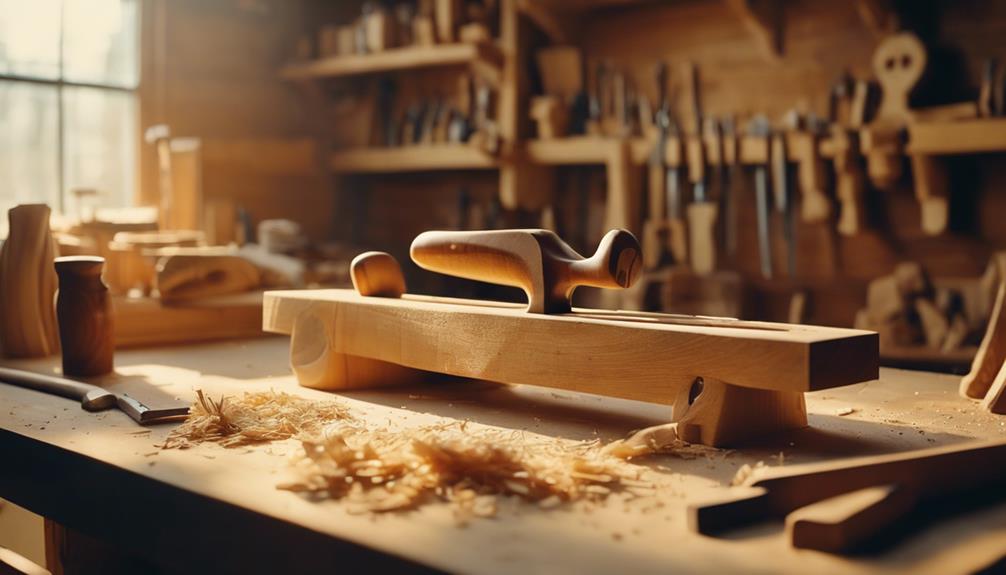
Woodworking isn’t just a hobby; it’s an intricate blend of art, skill, and tradition that has evolved to incorporate both the timeless and the contemporary. This craft has transcended basic functionality, embracing a broad spectrum of artistic expressions and technical prowess. As a woodworker, you engage in an art form that demands accuracy, creativity, and a profound understanding of your medium. The realm of woodworking offers a diverse array of activities that cater to different interests and skill levels, making it a perfect hobby for those inclined towards crafting and creativity.
Here are some tailored hobbies within the woodworking category, each offering its unique charm and challenges:
- Furniture Making: The classic choice for many woodworkers, this involves creating functional and decorative pieces, ranging from tables to chairs, with a focus on joinery and design.
- Wood Carving: This allows for more artistic expression, where you can sculpt intricate designs or figures from wood blocks, emphasizing detail and finesse.
- Woodturning: Using a lathe, this hobby involves shaping wood into symmetrical forms like bowls and vases, offering a satisfying blend of precision and creativity.
- Marquetry: The art of creating images and patterns on furniture or surfaces through the intricate assembly of pieces of veneer, showcasing skill in cutting and fitting.
- Pyrography: Also known as wood burning, this involves decorating wood with burn marks using a heated object, ideal for those who enjoy detailed work.
- Cabinetry: More than just building cabinets, this involves crafting storage solutions that are both functional and aesthetically pleasing, requiring a good understanding of space and design.
- Intarsia: A form of wood inlaying that involves fitting together pieces of wood of varying shapes, colors, and grains to create a mosaic-like effect.
- Whittling: A more casual and accessible form of wood carving, perfect for beginners looking to create small figures or decorative items with just a knife and a piece of wood.
- Frame Making: Crafting frames for pictures or mirrors, which can range from simple and rustic to elaborate and detailed, depending on your style and skill level.
- Wooden Toy Making: A delightful hobby that involves creating playful and imaginative toys, offering the joy of crafting items that bring happiness to others.
- Instrument Making: For the musically inclined, this challenging hobby involves crafting musical instruments, requiring a deep understanding of both woodworking and acoustics.
- Restoration: Reviving old or antique wooden items, this hobby combines woodworking skills with a love for history and preservation.
- Boat Building: On the more complex end, this hobby involves constructing wooden boats, demanding a high level of skill, patience, and attention to detail.
Engaging in woodworking, with its blend of traditional and modern techniques, not only fulfills the craving for creativity but also connects you to a rich cultural heritage. Whether you’re sawing and sanding, joining pieces with precision, or applying the finishing touches that highlight the wood’s innate beauty, woodworking remains a deeply satisfying and popular activity. Each of these hobbies within woodworking can bring your creative visions to life, offering a tangible expression of your passion and skill.
Metal Arts

Metal arts, a domain where the fusion of creativity and craftsmanship transcends the ordinary, offers a vast canvas for expression through materials like steel, copper, and aluminum. This field, rich in technique and possibility, provides enthusiasts not just a way to craft functional items but also to sculpt pure, breathtaking art forms.
Here, we delve into a curated list of 11 tailored hobbies within the metal arts, each offering a unique blend of challenge and beauty, making it a perfect hobby category for those fascinated by the transformation of metal.
- Welding Art – Beyond practical repairs, welding art has become a prominent form of expression, combining the strength of metal with the finesse of an artist’s hand. Its rising popularity, especially among DIY enthusiasts, showcases the vast potential in creating everything from garden sculptures to abstract installations.
- Blacksmithing – An age-old craft experiencing a modern renaissance, blacksmithing involves heating and shaping metal. Today, it attracts artisans passionate about crafting bespoke items like ornate gates, knives, and even jewelry, maintaining steady interest through its blend of tradition and innovation.
- Metal Sculpture – As public art installations become more prevalent, metal sculpture’s popularity soars. Artists in this field manipulate industrial materials to create detailed, expressive works that captivate viewers in galleries and open spaces alike.
- Jewelry Making – Combining fine metals with gemstones and other materials, jewelry making is an intricate hobby that ranges from crafting simple charms to elaborate, custom pieces. It’s a way to explore creativity on a miniature scale, with each creation reflecting personal style and artistry.
- Automotive Metalworking – For the car enthusiasts, automotive metalworking involves modifying or restoring vehicle bodies, making it both a challenging and rewarding pursuit. This hobby allows for a hands-on approach to automotive design and restoration, blending engineering with aesthetics.
- Chainmail Crafting – Reviving a medieval technique, chainmail crafting involves linking rings to create everything from historical armor pieces to modern jewelry and accessories. It offers a unique combination of history, craftsmanship, and creativity.
- Metal Engraving – Metal engraving is the art of incising a design onto a hard, flat surface by cutting grooves into it. This hobby requires precision and patience, allowing for the creation of intricate patterns and personalized items that tell a story.
- Repoussé and Chasing – These complementary techniques involve shaping metal by hammering from the reverse side (repoussé) and refining the design by working the front side (chasing). Artists and hobbyists alike appreciate the depth and dimension these methods bring to their creations.
- Sheet Metal Fabrication – This hobby involves cutting, bending, and assembling sheet metal to create everything from decorative items to practical household objects. It’s a great way to learn basic metalworking skills and experiment with creating custom designs.
- Metal Casting – Metal casting is the process of pouring molten metal into a mold to create a specific shape. Hobbyists can explore this ancient technique to make sculptures, jewelry, and functional items, experiencing the magic of metal transformation firsthand.
- Steampunk Art – Combining industrial aesthetics with Victorian influences, steampunk art allows hobbyists to create imaginative, retro-futuristic pieces. From costumes to gadgets, this hobby encourages a creative melding of metalwork with inventive design.
Exploring metal arts as a hobby isn’t just about manipulating material; it’s an embrace of a tradition that integrates innovation, creativity, and craftsmanship. Whether you’re drawn to the heat of the forge or the precision of engraving, the metal arts offer a compelling, enriching activity that connects you with centuries of artisanal heritage.
Glass Crafting Techniques
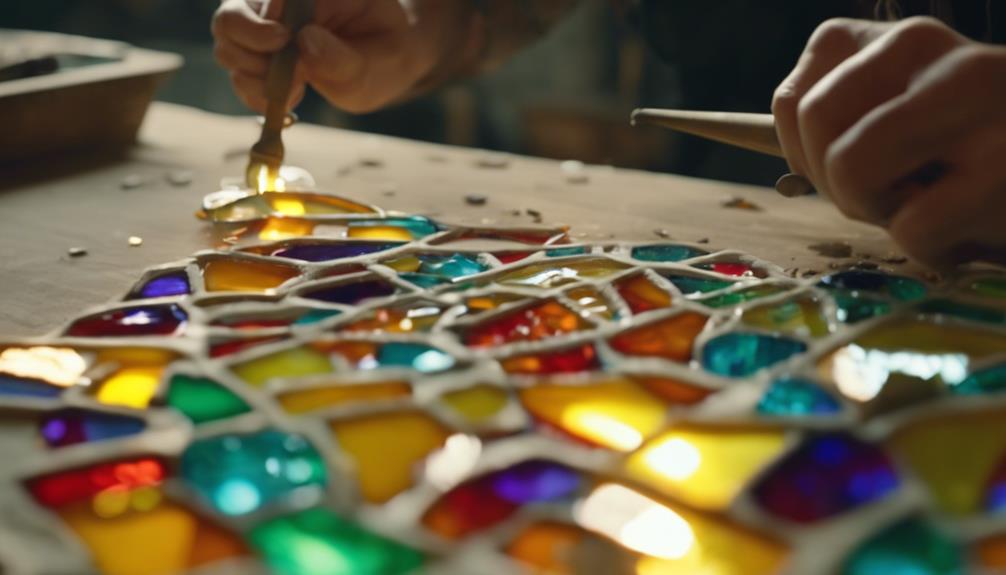
Glass crafting, an umbrella term for a variety of artistic endeavors, has seamlessly blended tradition with innovation, making it a perfect hobby for those who appreciate both the history and the frontier of creativity. From the intricate art of glass blowing to the precise technique of etching, glass crafting offers a palette of activities that cater to diverse interests and skill levels. Here, we explore a curated list of glass crafting hobbies, each with its unique charm and set of challenges.
- Glass Blowing: An ancient practice that has gained momentum among modern artists and enthusiasts. This method involves shaping molten glass into beautiful objects by blowing air through a tube. It’s particularly appealing for those interested in creating both functional items and spectacular art pieces.
- Glass Etching: This involves applying etching cream to glass surfaces to create frosted patterns or images. It’s a popular choice for personalizing glassware or crafting unique home décor. The simplicity of the process makes it accessible, yet the possibilities for intricacy can challenge even seasoned crafters.
- Fused Glass: A process where pieces of glass are layered and then melted in a kiln to fuse them together. This technique is versatile, allowing for the creation of jewelry, dishes, and art. It’s an exciting hobby for those who enjoy experimenting with color and texture.
- Stained Glass Making: The art of cutting colored glass and joining the pieces with lead came or copper foil. This traditional craft is enjoyed by those who appreciate the beauty of light filtering through colored panes, creating vibrant displays.
- Glass Casting: Involves melting glass into a mold to create solid shapes. This technique can be used to produce robust decorative items or sculptures, offering a different dimension to glass crafting.
- Lampworking: Similar to glass blowing but on a smaller scale, lampworking uses a torch to melt rods of colored glass that are then shaped into beads, figurines, or other small items. It’s a fantastic hobby for those who love detail.
- Glass Painting: Applying special paints to glass surfaces to create translucent art. It’s an excellent way for painters to explore a new medium, combining the techniques of painting with the unique qualities of glass.
- Sandblasting Glass: A method of creating frosted patterns on glass by blasting it with sand. This technique is great for creating textured effects on glassware or windows.
- Glass Mosaic: The creation of images or patterns from small pieces of colored glass. This hobby is perfect for those who enjoy piecing together intricate designs and working on projects over time.
- Glass Bead Making: Crafting small glass beads for jewelry or decoration. This hobby requires precision and patience but results in stunning, personalized creations.
- Cold Working Glass: Involves cutting, grinding, and polishing glass without the use of heat. This technique is ideal for those who prefer working with glass in its solid state to create finely finished pieces.
- Kiln Carving: A method where glass is melted over a carved ceramic or fiber mold in a kiln, creating a bas-relief. This hobby offers a unique blend of sculpting and glass crafting.
- Decoupage on Glass: Applying paper cutouts to glass and sealing them with varnish. This hobby combines the simplicity of decoupage with the elegance of glass, suitable for crafting personalized gifts or home décor.
Exploring the world of glass crafting not only preserves ancient arts but also places you at the heart of a dynamic movement that marries creativity with functionality. With such a diverse list of activities, glass crafting stands out as a perfect hobby for those interested in exploring the depths of their creativity and skill.
Scale Modeling Hobbies
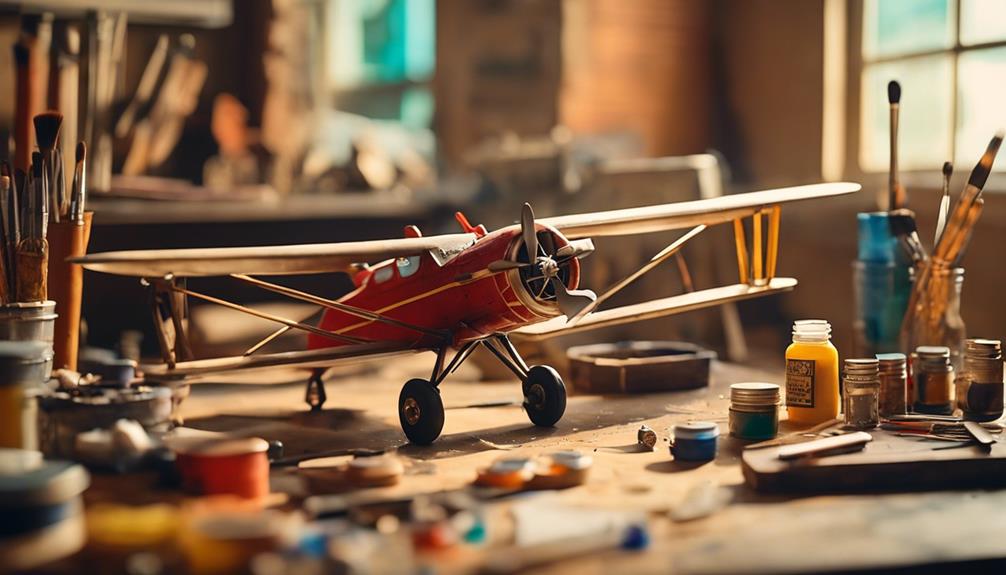
Venturing into the world of scale modeling, you immerse yourself in a hobby that not only demands a meticulous eye for detail but also a profound respect for historical veracity. This craft is far more than mere assembly; it’s an intricate blend of artistry and precision, where creativity and patience are paramount in producing models that excel in both detail and historical authenticity. As a challenging hobby, scale modeling captivates with its unique mix of difficulties and gratifications, appealing to those who enjoy both the process and the payoff of dedicated craftsmanship.
- Scale Choices: Hobbyists can select from various scales such as 1:24, 1:48, or 1:72. Each scale brings its own level of complexity and detail to the table, significantly impacting the model’s ultimate look and the intricacy of its assembly.
- Focus Areas: The realm of scale modeling is vast, encompassing aircraft, military vehicles, ships, cars, and dioramas. Each category demands a unique skill set and knowledge base for accurate replication of the originals.
- Skills Required: Mastering scale modeling requires an abundance of patience, an unwavering attention to detail, and a flair for creativity. The process of creating a miniature masterpiece involves complex detailing that both challenges and hones crafting skills.
The scale modeling community is witnessing an uptick in interest as more people come to appreciate the precision and commitment involved. This hobby is evolving continuously, fueled by innovation and a deep-seated appreciation for historical accuracy.
Here are 9 to 13 tailored hobbies within the scale modeling category, offering a wide range of interests and activities for enthusiasts:
- Aircraft Modeling: Building detailed replicas of historical and modern aircraft.
- Military Vehicle Modeling: Creating precise models of tanks, jeeps, and artillery from various eras.
- Ship Modeling: Crafting miniature versions of naval vessels, from ancient galleys to modern battleships.
- Car Modeling: Assembling detailed models of classic, sports, and racing cars.
- Diorama Building: Creating detailed scenes that capture moments in time, from historical battles to everyday life.
- Train Modeling: Constructing detailed models and layouts of trains and railways.
- Fantasy Modeling: Bringing to life creatures and settings from fantasy novels and films.
- Sci-Fi Modeling: Replicating spaceships, aliens, and futuristic settings from science fiction.
- Miniature Painting: Painting detailed miniatures for display or tabletop gaming.
- Historical Building Modeling: Creating detailed replicas of famous buildings and landmarks.
- Robotics Modeling: Combining scale modeling with robotics to create moving replicas.
- Paper Modeling: Crafting detailed models using cut and folded paper, an accessible entry point for beginners.
- 3D Printing Modeling: Utilizing 3D printing technology to create custom scale model parts or entire models.
Scale modeling stands out as a compelling hobby that offers a perfect blend of creativity, precision, and historical exploration. Whether you’re drawn to the painstaking detailing of military vehicles or the imaginative realms of sci-fi and fantasy, there’s a niche within this hobby to ignite your passion and challenge your skills.
Jewelry Crafting Techniques
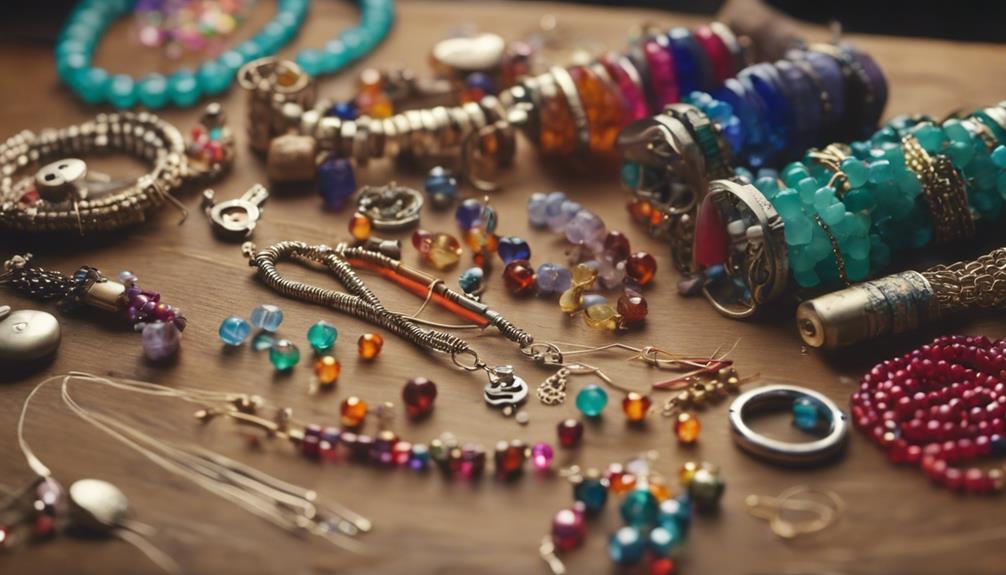
Exploring the realm of jewelry crafting uncovers a fascinating array of techniques that cater to a wide variety of interests and skill levels. This crafty hobby isn’t only about adorning oneself but also about expressing creativity and personal style through the art of making. From the intricate art of wire wrapping to the precision of metal stamping, each method offers a unique way to create stunning pieces of jewelry that can range from the elegantly simple to the complexly beautiful. As artisans blend traditional techniques with modern innovations, jewelry crafting continues to be an enjoyable hobby that evolves with contemporary tastes and technologies.
Here is a curated list of 9 to 13 tailored hobbies within the jewelry crafting category, showcasing a mix of well-loved classics and exciting innovations:
- Wire Wrapping: A versatile technique where artisans shape and wrap wire around gemstones and beads to create unique, intricate designs without the need for soldering.
- Bead Weaving: This method involves using small beads to create intricate patterns and textures, employing stitches like peyote and right-angle weave for vibrant and detailed creations.
- Metal Stamping: Allows for the personalization of jewelry pieces by imprinting messages, names, or designs onto metal surfaces, making it a perfect hobby for those who enjoy creating bespoke items.
- Soldering: A traditional skill that involves joining metal pieces together using a solder. This technique is foundational for creating a wide range of jewelry pieces, from simple to complex designs.
- Resin Jewelry Making: An exciting hobby that involves pouring resin into molds or bezels to create clear or colored pieces, often incorporating flowers, glitter, or other embellishments for a unique effect.
- Polymer Clay Jewelry: This fun and versatile medium can be sculpted, textured, and colored to create a variety of jewelry pieces, from earrings to pendants, showcasing one’s artistic flair.
- Enameling: The process of fusing powdered glass to metal to create vibrant, glossy pieces. Enameling is a great way to add color and life to metal jewelry.
- Chain Maille: Involves linking rings together in intricate patterns to create everything from elegant bracelets to elaborate body jewelry, offering a blend of history and creativity.
- Lost Wax Casting: A more advanced and challenging hobby, this technique involves creating a wax model of a piece that’s then encased in plaster and melted away, leaving a mold that’s filled with metal to create the final piece.
- Lapidary Arts: Cutting, polishing, and engraving stones for jewelry is both an art and a science, perfect for those interested in geology and the natural beauty of stones.
- Kumihimo Braiding: A Japanese technique of braiding cords, incorporating beads, to create strong, beautiful jewelry pieces like bracelets and necklaces.
- Macramé Jewelry: The art of knotting cords in patterns to create bracelets, necklaces, and earrings, offering a bohemian and earthy charm to one’s jewelry collection.
- Silversmithing and Goldsmithing: For those interested in working with precious metals, these hobbies involve crafting jewelry from silver and gold, employing techniques like forging, annealing, and finishing.
Each of these hobbies within the jewelry crafting category represents a unique blend of skill, creativity, and personal expression, making jewelry crafting an endlessly fascinating and enjoyable activity. Whether you’re drawn to the detailed work of bead weaving or the bold creativity of resin jewelry making, there’s a niche for every artisan to explore in this dynamic and rewarding field.
Leather Crafting Techniques
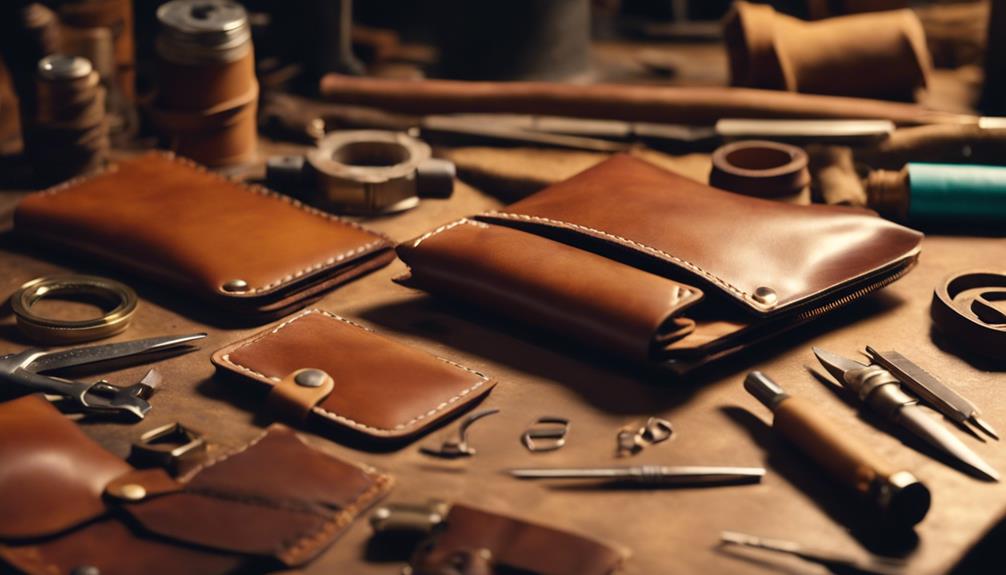
Leather crafting is an engaging and versatile hobby that combines creativity with skill to produce both functional and decorative items. From the simplicity of cutting and sewing to the artistic nuances of dyeing and embossing, this craft offers something for everyone, making it a popular activity among artisans and hobbyists alike. Not only does leather crafting allow for the creation of unique and personalized items, but it also provides an opportunity to delve into a blend of traditional and innovative techniques.
To broaden the horizon, here are some tailored hobbies within the realm of leather crafting, each catering to different interests and skill levels:
- Belt Crafting – Beginners can start by designing and cutting their own leather belts, experimenting with various widths and finishes.
- Bag Making – This intermediate hobby involves sewing and possibly dyeing, allowing for customization in size and style.
- Wallet Creation – An intermediate skill that combines cutting, sewing, and sometimes dyeing to create personalized wallets.
- Shoe Crafting – For those looking to challenge themselves, making leather shoes is an intricate hobby that requires advanced skills.
- Jacket Customization – Intermediate hobbyists can dye and possibly emboss leather jackets for a personalized touch.
- Keychain Designing – A beginner-friendly activity that involves stamping and cutting, perfect for small, fun projects.
- Tag Making – Similar to keychain designing, this beginner hobby involves stamping and cutting leather to create custom tags.
- Artistic Jewelry Crafting – An advanced hobby, embossing leather to create unique jewelry pieces showcases creativity.
- Cover Crafting – Intermediate crafters can dye and sew leather to create custom covers for books, tablets, or phones.
- Furniture Upholstering – For those looking to take their hobby to a new level, upholstering furniture in leather is a challenging yet rewarding project.
- Leather Carving – An intricate skill for creating detailed designs on leather, suitable for advanced hobbyists.
- Tooling Leather – This involves embossing and carving to decorate belts, wallets, or covers, offering a mix of creativity and skill.
- Leather Molding – Advanced crafters can explore molding leather into shapes for masks or sculptures, pushing the boundaries of traditional leather crafting.
Leather crafting stands out as an exciting hobby that not only encompasses a wide range of techniques and applications but also caters to various interests and skill levels. Whether you’re attracted to the functionality of making your own leather goods or the artistic expression found in detailed embossing and dyeing, leather crafting offers endless possibilities for personalization and creativity. As you explore these tailored hobbies, remember that practice and patience are key to mastering the art of leather crafting and achieving truly remarkable creations.
Digital Art Creation

In the dynamic and ever-changing realm of artistry, digital art creation emerges as a highly versatile and widely accessible pursuit, employing the latest in technology to expand the horizons of artistic creativity and expression. Artists who tap into digital resources, utilizing drawing tablets, advanced software, and a plethora of online platforms, find themselves in a realm where imagination meets limitless potential. This activity isn’t just a way to pass time; it’s a pathway to exploring a wide range of styles and techniques, offering artists unparalleled control and flexibility over their artwork. This makes digital art not only a popular hobby but also a profound medium for personal and professional growth.
- Ease of Editing: One of the standout benefits of digital art is the ease with which artists can edit their work. The ability to layer, undo, and tweak without consequence or waste makes digital art a highly forgiving and adaptable medium for creators at every level of expertise.
- Diverse Styles and Techniques: The digital realm is a playground of artistic exploration, offering everything from digital painting and vector graphics to photo manipulation. This diversity allows artists to experiment freely and master a wide array of artistic expressions.
- Online Showcase and Monetization: With platforms like Etsy, Redbubble, and Society6, artists have unprecedented opportunities to display and sell their digital works. This not only opens doors to global exposure but also provides a viable means of income, making digital art a truly rewarding hobby.
As digital art’s popularity surges, its status as a fun hobby gains more recognition. With the right tools and access to various platforms, anyone can embark on this digital adventure, merging art with technology to craft extraordinary and distinctive pieces. Here are some tailored hobbies within the realm of digital art creation that stand out as exciting options for enthusiasts:
- Digital Illustration: Creating detailed and vibrant illustrations using software like Adobe Illustrator or Procreate.
- 3D Modeling: Designing and rendering three-dimensional characters, objects, and environments using tools such as Blender or Maya.
- Animation: Bringing characters and stories to life through motion, using software like Adobe After Effects or Toon Boom.
- Graphic Design: Crafting visual content for branding, advertising, web design, and more, utilizing platforms like Adobe Photoshop and InDesign.
- Digital Photography Editing: Enhancing and manipulating photos to achieve stunning visual effects with programs like Lightroom and Photoshop.
- Pixel Art: Creating artwork and gaming sprites with a retro feel, using pixel-based editing tools.
- Typography: Designing and arranging type to make written language visually appealing and impactful.
- Concept Art: Generating visuals for movies, video games, and animation, focusing on characters, environments, and mood.
- Web Comics: Producing and publishing sequential art stories online, engaging audiences through digital platforms.
- UI/UX Design: Designing user interfaces and user experiences for apps and websites, ensuring they’re visually pleasing and functional.
- Virtual Reality Art: Creating immersive art experiences using VR technology, allowing users to interact with art in three-dimensional space.
- Digital Scrapbooking: Combining photos, text, and graphics to preserve memories in a digital format.
- Video Game Design: Developing the visual aspect of video games, including character design, environment creation, and UI elements.
Each of these hobbies offers a unique way to engage with the digital art world, whether you’re looking for a fun hobby, a new skill to master, or a potential career path. The blend of art and technology not only makes for a fulfilling pastime but also opens up a spectrum of creative and professional possibilities for artists around the globe.
Basketry Techniques
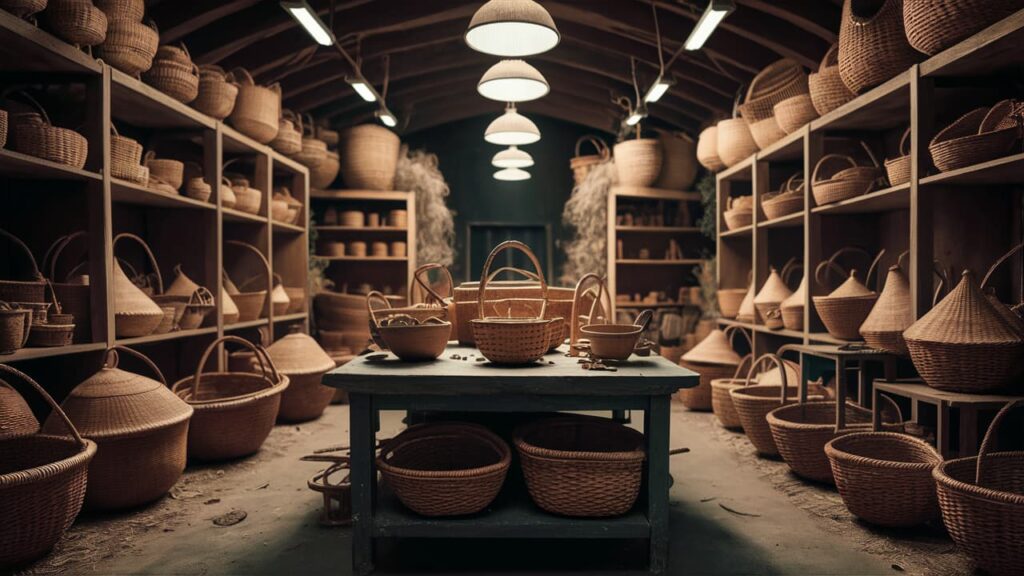
Why do modern enthusiasts increasingly explore the ancient craft of basketry, utilizing techniques such as coiling and twining to craft not only baskets but also a meaningful link to tradition and nature? This revival transcends mere nostalgia; it represents a creative endeavor to fulfill a growing demand for sustainable, tactile experiences that serve as an antidote to the digital age. Basketry, with its reliance on natural materials like reeds, grasses, or vines, offers a distinctive combination of practicality, aesthetics, and environmental connectivity.
The charm of basketry stems from its harmonious fusion of tradition and innovation. Engaging in this craft means more than mere creation; it’s an involvement in an art form that has metamorphosed over millennia, reflecting the materials and cultural customs of diverse locales. Here’s why this craft captivates so many:
- Connection to Nature: Engaging with natural materials provides a grounding experience, nurturing a profound respect for the earth’s bounty.
- Creative Expression: The assortment of techniques, ranging from coiling to wicker weaving, opens up limitless possibilities for creative design and utility.
- Cultural Heritage: Immersing oneself in basketry techniques offers a channel to connect with and uphold traditional crafts handed down through the ages.
Embarking on the journey of basketry is more than adopting a hobby; it’s weaving a creative trajectory that links you to the planet and its legacy.
Alongside basketry, here are 9 to 13 tailored hobbies that also offer a blend of tradition, creativity, and a touch of nature, making each a popular activity for those seeking a meaningful pastime:
- Pottery: Shaping clay into functional and decorative items connects you with an ancient craft and the tactile joy of creation.
- Gardening: Cultivating plants and flowers offers a direct connection to the earth and the cycles of nature.
- Woodworking: Crafting items from wood combines creativity with a deep appreciation for this natural resource.
- Calligraphy: The art of beautiful writing not only revives a traditional skill but also offers a meditative, creative outlet.
- Foraging: Learning to identify and collect wild edibles fosters a unique bond with the local ecosystem.
- Homebrewing: Crafting your own beer or wine is a blend of art and science, with roots in ancient practices.
- Birdwatching: Observing and identifying birds connects you with wildlife and can deepen your appreciation for natural habitats.
- Photography: Capturing moments in nature or human life offers a creative avenue to document and appreciate the world’s beauty.
- Knitting or Crocheting: These time-honored crafts provide a way to create functional, beautiful items while enjoying a relaxing activity.
- Herbalism: Studying and using plants for their medicinal properties reconnects you with traditional healing methods.
- Astronomy: Exploring the night sky offers a humbling connection to the cosmos and its timeless mysteries.
- Leatherworking: Crafting with leather hearkens back to one of the earliest human crafts, combining durability with beauty.
- Rock Climbing: While more physically demanding, this hobby connects you with the rawness of nature and offers a thrilling challenge.
Each of these hobbies, including basketry, serves as a bridge to our heritage, the natural world, and our intrinsic need for creativity, making them a perfect hobby list for those seeking to enrich their lives with meaningful, engaging activities.
Eco-Crafting Techniques
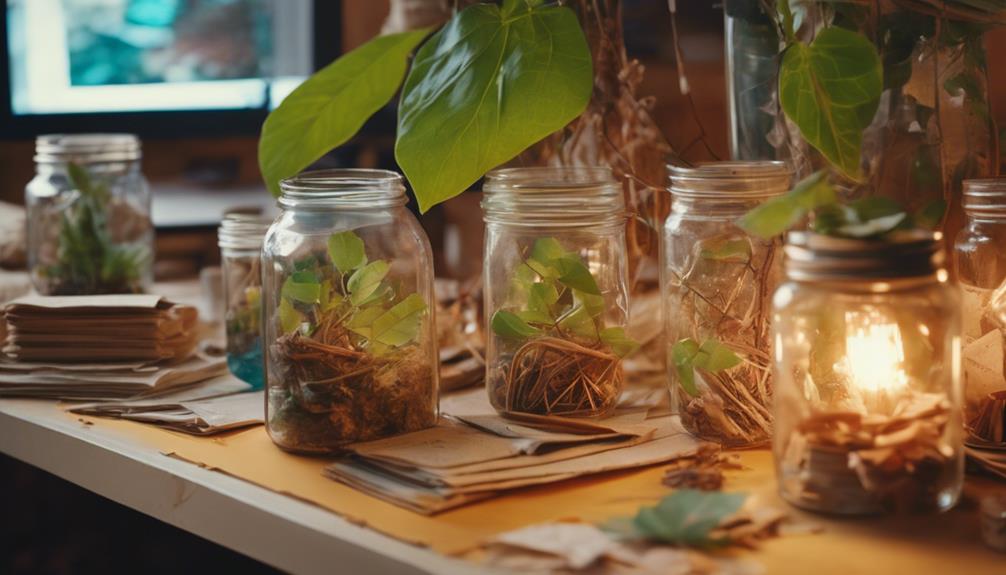
Eco-crafting techniques aren’t just a trend; they’re a lifestyle choice that marries creativity with sustainability. This approach to arts and crafts prioritizes the use of sustainable, eco-friendly materials, making a significant impact on reducing waste and promoting environmental health. Through recycling, upcycling, and repurposing, eco-crafting offers a myriad of ways to transform everyday items into meaningful, artistic expressions.
Here are some of the most popular eco-crafting hobbies that not only foster creativity but also contribute to a sustainable lifestyle:
- Paper Mache Art: Utilizing recycled paper and cardboard, this hobby involves creating sculptural pieces, which can be both decorative and functional, reducing landfill waste.
- Fabric Scrap Quilting: By collecting and piecing together fabric scraps, quilters can create beautiful, cozy quilts, lessening the demand for new textiles.
- Bottle Glass Decor: Transforming used glass bottles into decorative items or jewelry brings a new lease of life to what would otherwise be waste.
- Natural Dyeing: Using plant-based dyes for coloring fabrics or paper is a great way to incorporate natural elements into crafts, promoting an eco-friendly dyeing process.
- Eco-printing: This involves pressing leaves, flowers, and other natural elements onto paper or fabric to create beautiful, organic prints.
- Twig Weaving: Creating baskets, decorations, or even furniture from twigs and branches emphasizes a connection with nature and utilizes readily available materials.
- Seed Paper Making: Recycling paper into seed-embedded paper not only reduces waste but also encourages planting and growing, adding a green thumb aspect to crafting.
- Upcycled Fashion: Modifying old clothing or textiles into new, fashionable pieces showcases creativity while significantly reducing the need for new garments.
- Recycled Jewelry: Crafting jewelry from recycled materials, such as paper beads or repurposed metal, combines artistry with sustainability.
- Eco-friendly Candle Making: Using natural waxes and recycled containers for candle making is both a creative and environmentally conscious hobby.
- Homemade Natural Soaps: Crafting soaps with natural ingredients and eco-friendly packaging reduces the environmental impact associated with commercial soap production.
- Upcycled Furniture: Taking old furniture and giving it a new life with creative modifications not only saves it from the landfill but also adds a unique touch to home decor.
Eco-crafting isn’t just a fun hobby; it’s a powerful expression of dedication to a more sustainable and environmentally friendly way of life. By embracing these activities, individuals not only enhance their artistic skills but also contribute positively to the environment. This movement towards eco-friendly crafting highlights the significant role personal choices play in fostering sustainability within creative pursuits.
Benefits of Arts and craft hobbies

- Enhances Mental Well-being: Arts and craft hobbies are a proven way to reduce stress and anxiety. Engaging in these activities has been shown to make individuals feel more relaxed and at peace.
- Boosts Creativity and Problem-solving Skills: Crafting provides an excellent opportunity to boost your creativity. The act of creating something from scratch stimulates your brain and encourages innovative thinking.
- Improves Hand-eye Coordination and Fine Motor Skills: Crafting activities demand precision and coordination, which in turn enhances your hand-eye coordination and fine motor skills. Activities such as knitting, painting, or sculpting involve intricate movements that contribute to physical dexterity.
- Elevates Mood and Self-esteem: Completing a project offers a unique sense of accomplishment and satisfaction. This achievement can significantly elevate your mood and boost your self-esteem.
Tips and tricks for Arts and craft hobbies
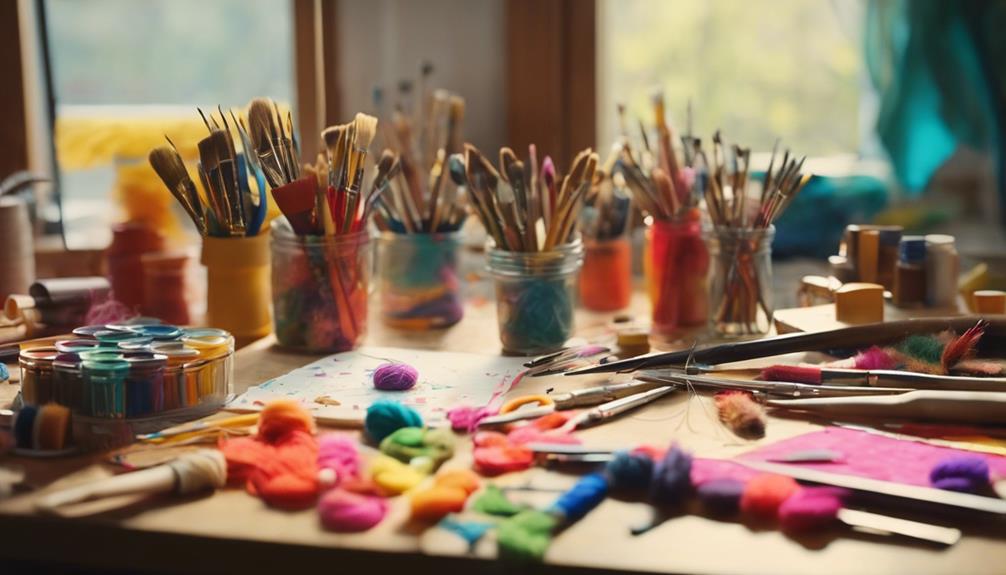
To maximize your artistic potential and keep pace with evolving trends, it’s crucial to invest in high-quality materials and continuously refine your techniques. Utilizing top-tier supplies such as acrylic paints, watercolor paper, and professional brushes can significantly enhance the outcome of your projects. This approach not only elevates the quality of your work but also sustains your interest in the hobby by enabling more satisfying results.
In the realm of arts and crafts, staying ahead involves:
- Experimenting with various techniques, including blending colors, creating textures, and mastering different brush strokes, to add depth and appeal to your creations.
- Seeking out educational opportunities such as workshops, classes, or online tutorials to acquire new skills and draw inspiration, keeping your creative interest piqued.
- Prioritizing an optimal working environment with good lighting and organized supplies in a designated workspace to minimize distractions and foster a productive atmosphere.
These strategies aren’t just about maintaining relevance in a fast-paced hobby sector; they’re about leveraging data-driven insights to continually refine your craft. By investing in quality, embracing education, and optimizing your workspace, you position yourself to thrive within the dynamic landscape of arts and crafts, ensuring your interest remains engaged and your skills sharp.
Be smart: Multitask and take Arts and craft hobbies to next level
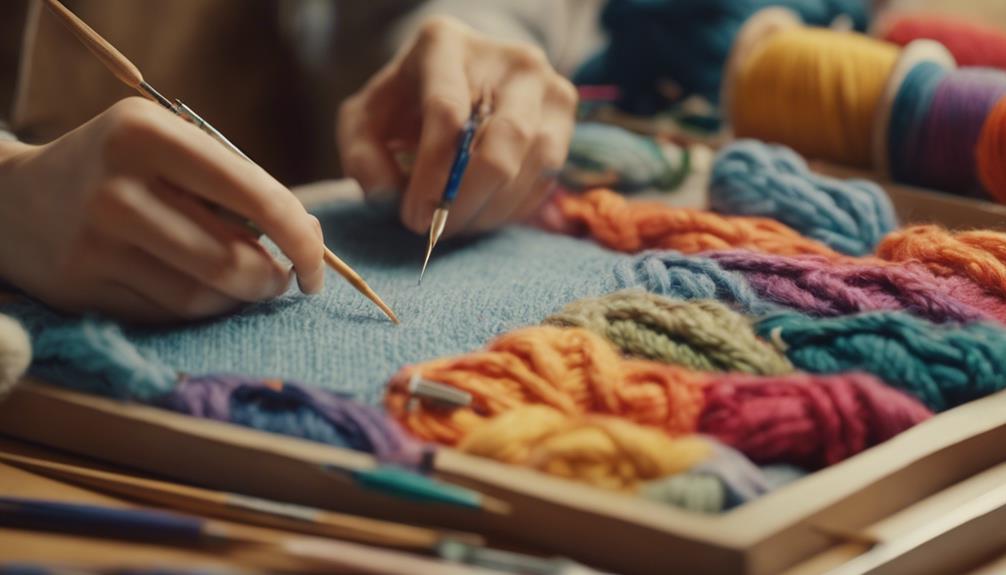
- Leverage Audiobooks for Learning: While engaging in your arts and crafts hobbies, consider integrating audiobooks from platforms like audible.com or blinkist.com. This allows you to absorb valuable information or enjoy captivating stories without having to pause your creative process. It’s a seamless way to enhance your knowledge or entertain yourself, thus making the most out of your hobby time.
- Utilize Online Courses for Skill Advancement: Platforms such as coursera.org or udemy.com offer a wide range of affordable courses tailored to various interests in arts and crafts. By enrolling in these online courses, you can significantly advance your skills in your hobby. It’s an efficient and cost-effective method to learn new techniques or dive deeper into specific areas of interest, all at your own pace.
Incorporating these strategies into your arts and crafts hobbies not only maximizes your creative potential but also enriches your learning experience. By multitasking through listening to audiobooks and taking online courses, you’re not just crafting; you’re expanding your horizons and skill set in an enjoyable and productive manner.
Discover AI Craft Suggestions
Introducing our innovative Hobby Generator! Our tool uses advanced AI to suggest hobbies tailored just for you. It’s simple – chat with our friendly bot, share your preferences, and get personalized recommendations.
Here’s how it works:
- Initiate a Conversation: Start chatting with our bot in a friendly way.
- Share Your Preferences: Tell us what you like, how much time you have, your activity level, and any specific interests.
- Receive Tailored Recommendations: Based on your answers, our AI suggests hobbies just for you.
For instance:
- If you’re into visual arts and prefer home activities, we might recommend Digital Art Creation.
- If you enjoy hands-on tasks and find calm in repetitive activities, Crocheting could be a great fit.
- For tech enthusiasts curious about mechanics, Robotics might be the hobby for you.
Our Hobby Generator ensures that the hobbies suggested match your interests and lead you to new discoveries. Start exploring your personalized hobby recommendations now!
Final thoughts
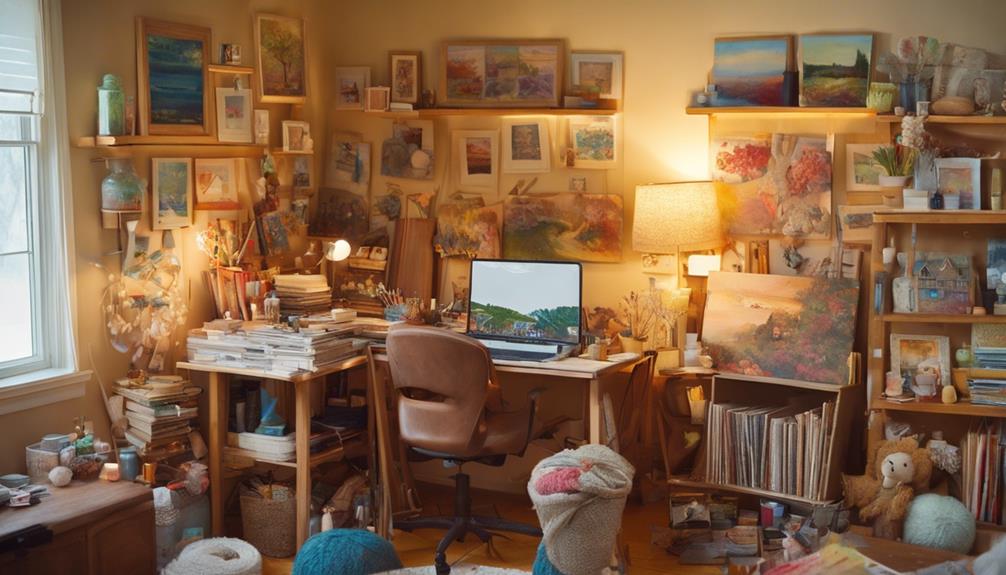
Arts and crafts hobbies are not just fun; they can actually make you feel good. Research shows that doing creative things like sewing or painting can make your brain work better and help you solve problems. It can also make you feel happier.
Lately, more people are interested in making things by hand. This shows how important and satisfying it is to create something that is unique. It’s not only about what you make, but also about the whole process – using your own ideas and working hard to bring them to life.
The best part is that you don’t need a lot of fancy stuff to start with arts and crafts. Just grab a pencil or some thread, and you’re good to go. This makes it easy for anyone to try it out, no matter who you are. Making art can help you relax and express yourself, no matter where you come from.
Frequently Asked Questions
What Are Some Arts and Crafts Hobbies?
You’re probably wondering about arts and crafts hobbies. They’re not just pastimes; they’re avenues for creativity and self-expression. From painting to sculpting, these activities enhance cognitive skills and boost mental well-being. Let’s explore some options.
What Is a Hobby That Keeps You Creative?
You’re seeking a hobby that fuels creativity, right? Consider painting, paper quilling, embroidery, soap making, or card making. These activities blend trends, personal expression, and skill development, keeping your creative juices flowing.
How Do I Find the Right Creative Hobby?
To find the right creative hobby, you’ll need to explore your interests and experiment with different options. Look for trends in what excites you, and use online tutorials or local classes to dive deeper. You can discover many creative hobbies in our article above or try our hobby generator for more personalized results.
What Is the Best Craft to Learn?
Finding the best craft depends on your interests and goals. Analyzing trends, pottery’s popularity is soaring for its creative freedom. However, knitting’s therapeutic benefits and practical outcomes are also making it a top choice.




